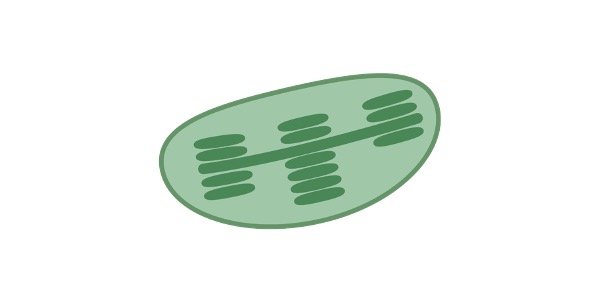Table of Contents
Amoeba Definition
Amoeba demonstrates amoeboid movement exhibited by the extension and retraction of pseudopods. Many cells of certain animals, fungi, and plants are amoeba-like and are called amoeboids. However, an amoeba is a species that comes under the genus Amoeba and the domain Eucarya. These eukaryotic protists are known as true amoeba for example Amoeba proteus.
What is Amoeba?
Amoeba belongs to the genus Amoeba of the family Amoebidae and class Tubulinea. They are single-celled protists like other members of their genus. Amoeba is characterized by their movement using a false foot known as pseudopodia that are formed by cytoplasmic and protoplasmic projections. They feed on other detritus or protists and are free-living. For example, the Amoeba proteus or the giant amoeba.

Amoeba is considered a variant of the cell that can change shape by cytoplasm movement and produce pseudopods. They were earlier grouped under the subphylum Sarcodina. With the help of molecular phylogenetic studies, it was revealed that this subphylum was monophyletic. A common ancestor could not be traced as the organisms belonging to it had not evolved from a single common ancestor.
The amoeba term is used to refer to organisms As such, they have amoeboid characteristics. Clinically significant protists include Entamoeba histolytica and Naegleria fowleri.
Amoeba Characteristics
An amoeba cell contains vacuoles, pseudopod, ectoplasm, endoplasm, membrane and nucleus. The amoeba can change its shape constantly due to microfilaments that enable projections that help in movement.
The pseudopodia projects in the direction that amoeba wants to move for procurance of food. This enables the cell to move forward in a sliding manner or crawl on a substrate. The amoeba utilizes its false foot not only for movement but also for capturing and ingesting its food.
The food is first surrounded by its pseudopod, the ectoplasm extends towards the food to form an ectoplasmic tube through which the food enters the cytoplasm as a vacuole. This process is similar to phagocytosis by a phagocyte cell of the human body. Structurally the amoeba can be divided into the inner endoplasm and the outer ectoplasm.
The endoplasm entails the protoplasm and is the region where different metabolic reactions occur, whereas the ectoplasm is a transparent thin rigid part.
The pseudopod is formed by varying consistencies of ectoplasm and endoplasm. The amoeba can form a single pseudopod at one time or several at once when they are crawling or free-floating.
They have a single nucleus where all the DNA is concentrated. Contractile vacuoles that regulate osmoregulation are also present in the cytoplasm. This vacuole is filled by excess water of cytoplasm termed as diastole then this excess water is released outside by first fusing with membrane and then contracting itself (systole).
This organism uses the method of binary fission for reproduction. Binary fission is a form of asexual reproduction that involves cytokinesis and mitosis. Syngamy occurs in some Amoebozoans where genetic recombination and meiosis occur.
Amoeba Classification
Amoeba was earlier grouped under Sarcodina subphylum, within the phylum Sarcomastigophora. This subphylum comprises single-celled organisms that use pseudopod or cytoplasmic flow for movement.
Later amoeba was removed from this subphylum as this subphylum was revealed to be not a monophyletic group through phylogenetic research. As they do not have a common ancestor they cannot be phylogenetically be considered as a group. But the domain of amoebas remains domain Eucarya.
Amoeba Examples
Free-living Amoeba can be found in habitats like soil or freshwater habitats. They predate on bacterial populations and other protists. Amoeba proteus is the largest free-living amoeba and can grow to about 2mm. They are non-pathogenic as no occurrence so diseases caused by them have been reported, but some amoeboids are opportunistic pathogens. If they find a suitable host they may survive as a parasite and cause disease in the host.
Entamoeba histolytica is a medically significant strain of amoeba. They can cause amebic dysentery and entamoebiasis to their host which includes primates and humans. It exists in a cyst form that can be ingested by contaminated food and water.
Inside the host, the trophozoite is released from the cyst in the GI tract. This form is pathogenic and can cause bloody diarrheas as it cause flask-shaped ulcers. It can also travel through the blood to reach other organs like the liver where they can cause significant damage.
Another clinically important one is Naegleria fowleri that can be found in warm freshwater lakes, hot springs, and rivers. It is a facultative parasite it can occur as a free-living state but on finding a host when it is inhaled through the nostrils and penetrates the mucous there.
From the olfactory nerves, it can migrate to the brain where it can damage neurons and other tissues like astrocytes and can lead to naegleriasis that is a severe condition.
Amoeba Citations
- Vermamoeba vermiformis: a Free-Living Amoeba of Interest. Microb Ecol . 2018 Nov;76(4):991-1001.
- Giant virus vs amoeba: fight for supremacy. Virol J . 2019 Nov 4;16(1):126.
- The Ecology and Evolution of Amoeba-Bacterium Interactions. Appl Environ Microbiol . 2021 Jan 4;87(2):e01866-20.
- Figures are created with BioRender.com













